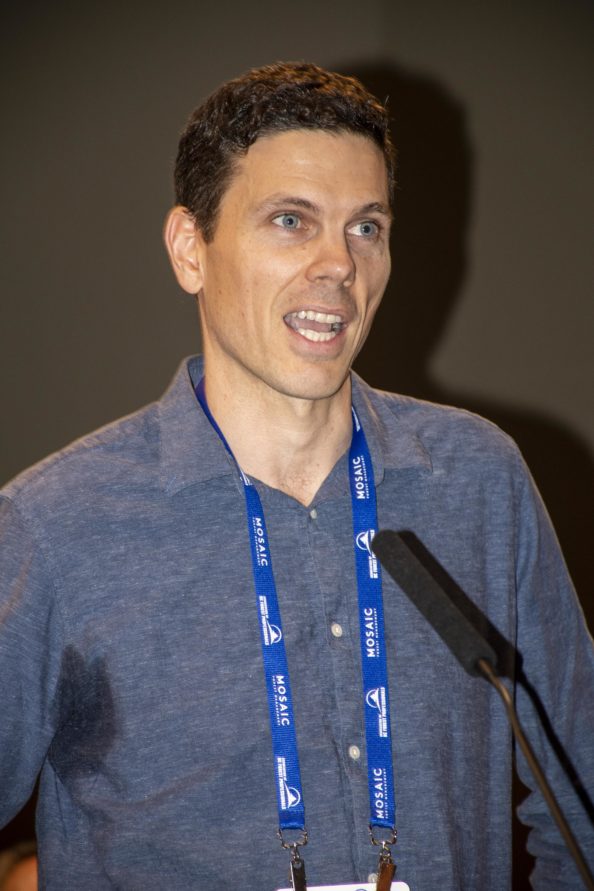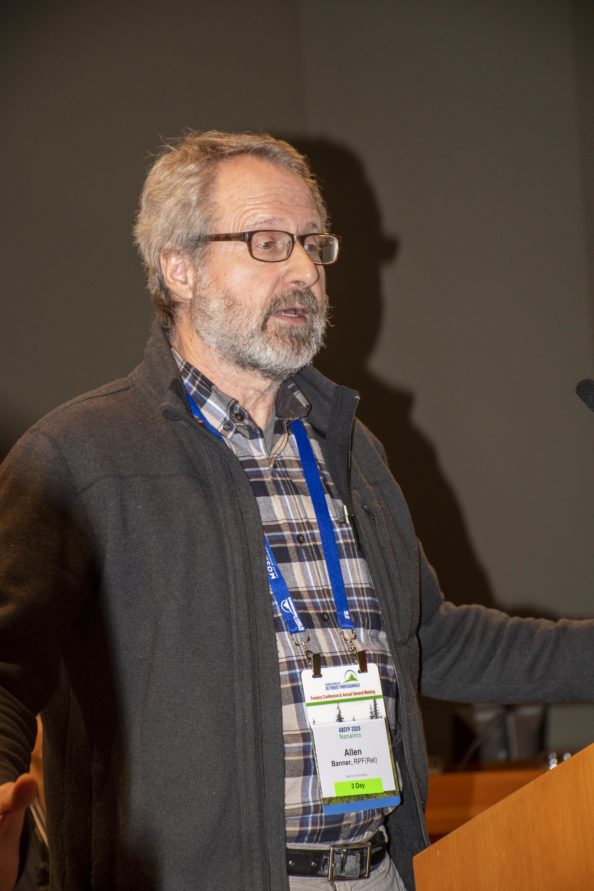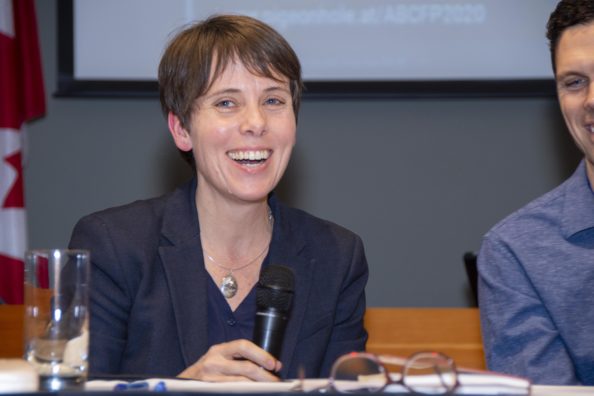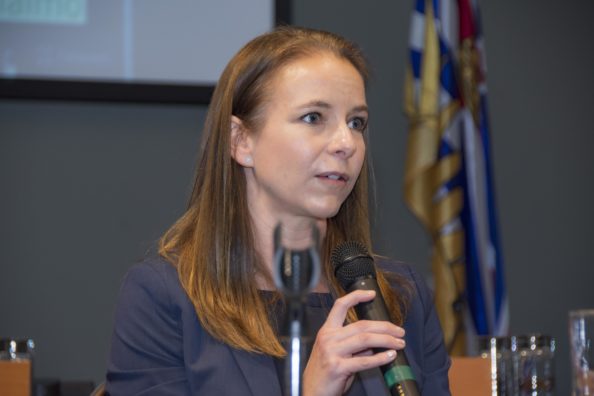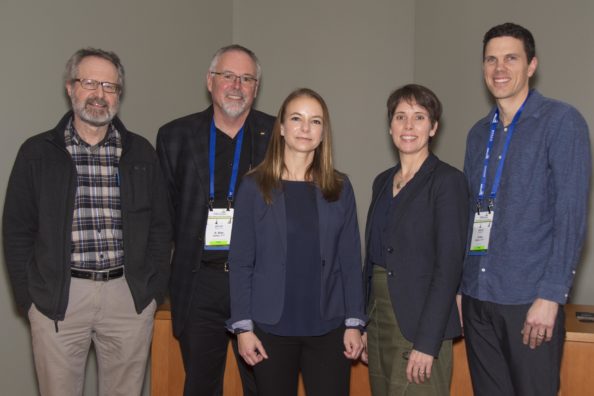
Allen Banner, Al Gorely, Shannon Janzen, Sonia Furstenau, and Jordan Benner
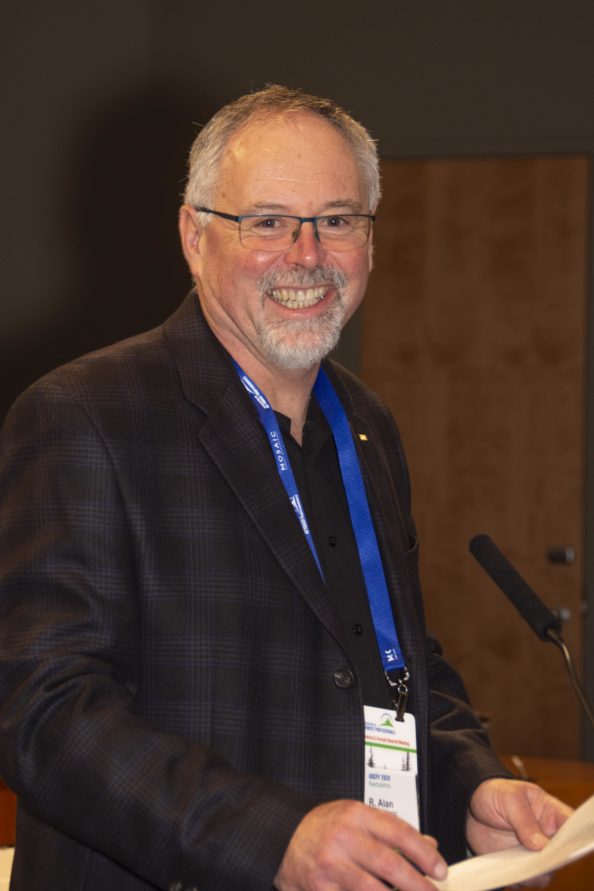 Panel moderator Al Gorley, RPF—co-leader of the government’s current old-growth review—noted the significant expertise on the panel and how it parallels the range of science, forest practices and governance complexity he’s been hearing from on the topic.
Panel moderator Al Gorley, RPF—co-leader of the government’s current old-growth review—noted the significant expertise on the panel and how it parallels the range of science, forest practices and governance complexity he’s been hearing from on the topic.
First up, ecologist Allen Banner, RPF, RPBio, set the stage with the science behind establishing old-growth definitions for field managers in the Great Bear Rainforest and its applicability to neighbouring forests. Banner also emphasized the value of maturing second growth forests given the need to plan for a forest 100 to 500 years from now.
Shannon Janzen RPF, VP and Chief Forester at Western Forest Products spoke of her appreciation of Greta Thunberg’s effort to increase awareness and concern over climate change and the growing awareness of the positive role forests can play. For Janzen, this includes the significant volumes of coast old-growth forests not available for harvest, the retention harvesting undertaken to mimic natural disturbances and management of the working forest to protect important ecological features. Key for Janzen are clear objectives and not trying to manage for the same thing in every forest.
Jordan Benner FIT, PhD Candidate and research advisor for the Nanwakolas Council brought the First Nations perspective to the discussion. This includes the import of syncing First Nations’ history and experience with current forest practices but also the challenge of scale—where the lines on a map lie versus their geographic interests).
Finally, Green Party MLA Sonia Furstenau spoke of the public’s passion for old-growth, the lack of trust in government management and the policy makers challenge with its four-year election cycle. In Furstenau’s view, we need to decide what the forests 100 years from now will look like and take prompt action to move forward.
